Walrus Audio Slöer ambient reverb pedal takes Slö’s unique algorithms into new fields by stereoizing and expanding them in features; review!
Reverb pedals are a dime a dozen. From super cheap (50€ Donner) to the top model for 700€ (Meris Mercury X). Each has its character and color. A reason why many musicians have more than one reverb. Character and color that also fits the Walrus Audio Slö, which I tested last year.
Slö is a rich-sounding reverb pedal. At 219€, it is in the mid-range budget field and focuses on textural, ambient sounds. It impressed me in the test with lush, smooth soundscapes. But there was one downer: the mono signal path. Not optimal for synth players. A criticism that is widespread in the pedal community.
In July 2023, Walrus Audio took the criticism seriously and brought the Slöer to the market, in stereo, with more algorithms and other new neat extras. It was clear that I had to check out the stereo version, too. Time for my Walrus Audio review, of course, with synths.
Disclaimer: thanks to FACE distribution for kindly sending the Walrus Audio Slöer to me for a review.
Unboxing
The pedal is delivered in a black box with the Walrus Audio logo. Simple but very pleasing. Opened up, we see the pedal in the blue version, a WA-branded fabric bag for the pedal, cards for the manual and the factory artist presets, and two stickers. Including a “Hey, I Love You” sticker”.
I really like the idea of printing the manual on a card. Nowadays, developers like to forego this entirely and only refer to the website with a link to download the PDF. In the Walrus Audio case, you always have it if you need to know something.
Walrus Audio SLÖER
WA’s ambient reverb adventure started with the Slö. The Slötva was added later. A Slö with presets. The Slöer raises the whole pedal to another level. It starts with a new design. From a longer to a wider, square-like layout.
There is a lot of Slö tech in the pedal itself. One of the key differences, however, is the signal path. The Walrus developers have taken it from a simple mono to a stereo pedal, a wish of many Slö users.
Synthesizer players benefit greatly from this upgrade as they can now immerse the Slö algorithms in full stereo. A little downer, a switch on the back where you can switch between guitar and line input is still not available—a feature I love from Eventide, and other pedals.
You almost don’t have to look at the back as it’s kept so simple. Two mono inputs and two mono outputs each on 6.35mm, giving you a stereo input and output. Of course, a mono-in and stereo-out configuration is also possible. In this, the signal is only doubled.
Plus, you get a power supply input. Nope, a power adapter is not included. Walrus Audio left the connectivity to the bare minimum. So, firmware updates or MIDI control are also non-topic in the stereo version. Neither a USB nor MIDI interface is onboard.
Old Familiar Meets New Algorithms
The Slö was able to convince me with its original algorithms last year. Each of them has a very unique color and character. One is brighter, another darker, or a combination with movement. A colorful mix of reverbs. In the Slöer, these three original algorithms make a comeback in stereo, including:
- Dark – a more classy reverb with an optional lower octave reverb effect for more mysterious, gloomy timbres
- Rise – a reverb with an auto-swell effect for sparkling effects
- Dream – a large and lush ambient reverb that turns every sound, even a poop, into epic soundscapes.
You don’t have to do without the integrated multi-wave modulation of the Slö pedal. But more on that later.
New, however, are two algorithms that are exclusive to Slöer.
- Rain – a reverb with lower levels of diffusion, giving you echo-like effects within it
- Light – a bright, smooth, ethereal reverb with an octave-up shimmer, great on synths.
The sound of all five algorithms is high quality. Everything is clear, and no unwanted artifacts or glitches. Reverbs at a very high level.
Algorithms In Action
Regarding the algorithms, my opinion of the three originals remains the same as in my Slö review. Or better as they come with extra features. For example, the ability to adapt the stereo width via switch in three ways is an impressive upgrade on the original algorithms.
Dark and Dream algorithms are my favorites again. Dark creates lovely, deep sounds with a rich fundament and a mysterious character. With added modulation, you can infuse a more organic vibe to it.
Dream, on the other hand, throws any sound into infinity and puts the musician on an intergalactic ambient trip. This time, it’s just more epic and flexible in stereo.
Even if it is now stereo, Rise remains the clunky candidate. It generates lovely auto-swelling reverbs that are difficult to control with synth sounds.
For me, it harmonizes better with a guitar’s playing style and dynamics than a synth. It’s a quality reverb, but not perfect for synths.
Then, the new candidates: Rain and Light. Two high-quality reverb algorithms that fit smoothly into the Slö cosmos. As the Walrus Audio website appropriately writes, Rain is a tappy and trippy algorithm. I can’t describe it better. It’s a unique reverb with a standalone character that you must slowly get to grips with.
I’m not sure it would be my go-to synth reverb algo, as it has its own fascinating build-up and fall characteristics. It is a special one that needs to be explored; it is neither a classic nor a super lush soundscape reverb.
Light is exactly the opposite. Very bright, spherical, and lush. What a lovely synth reverb. Perfect for recording endless, fluffy soundscapes.
So seen, the Slöer algorithms remain faithful to the Slö concept. Very original reverbs without repeating the past or imitating a vintage unit.
Expanded Hands-On Control
I have highlighted two significant innovations in the Slöer: new algorithms and stereo. The sound flexibility has also been tweaked positively. Thanks to an extended control panel, you can achieve a wider range of sounds than in the Slö or Slötva.
Besides the classic controls decay, filter, depth, and mix, it now hosts a stereo width switch with three modes: wide, medium, and narrow. A neat extension extends the sonic capabilities of the pedal. Even though it’s there now, I was stuck with the wide setting. I liked it best with synths.
The classic knob and switch design falters somewhat with the new center. Two vertical X/stretch sliders dominate here. An element that is familiar from the new Walrus Audio budget pedal series. X is the function that is different per algorithm, just like with the Slö pedal. This time in a slider.
Next to this is the all-new stretch parameter. The stretch slider reduces the processor’s sample rate, allowing you to create longer reverbs with less brilliance and added artifacts. Exciting feature for more organic-timbered reverbs.
Tip: Don’t change the parameter in a performance with a big atmosphere. You will hear the sample rate manipulation very clearly in the reverb.
Expanded Modulation
The modulation engine is also onboard again but in an expanded form. To access it, you must go into the mode switch’s secondary function by pressing the bypass switch.
It now features five classic and usual waveforms (sine, warp, sink, square, and random) supported by the depth knob that controls the amount of modulation infused in the reverb.
Combine them with the algorithms, and you wake up the real Slöer with the beautiful, washed-out, lush reverb colors that we know from the Slö pedal. Moving reverbs that turn any sound into an instant soundscape/texture. But always use it in the right dose on your sonic trip. Too much could lead to shaky situations.
Further, two footswitches are also available. One does true bypass, and the other is for sustaining the reverb, great for creating endless sounds. Pressing them together takes you to the preset system, where you can load and save presets. Slöer has three factory presets that can be overwritten.
Walrus Audio Slöer Review Conclusion
Slöer is an excellent further development of the Slö reverb pedal, finally in stereo. The new algorithms are great and of high quality. The Light, in particular, is a lot of fun with synths. Stereo Width and stretch are solid extras to tweak around with but aren’t groundbreaking functions.
They bring in organic-flavored characters and make them more flexible. But they don’t give you reverbs from another planet. Unfortunately, they didn’t take the chance to MIDIyied the pedal, so preset exchange and MIDI control are unavailable.
At €389-399€ in Europe, the pedal is no longer in the budget league and is a bit pricey for its feature set compared to the competitors. Nevertheless, Walrus Audio created an excellent-sounding reverb pedal with the Slöer, which was convincing in the review process. Especially with its form factor, unique algorithms, and sound quality. A pedal that can enrich every ambient music performance.
The Slö is one of the best ambient reverbs on the market, if not the best. Slöer continues right there and will remain one of my favorites for a long time.
Availability
Walrus Audio Slöer is available now in a blue and black edition for $349,99 in the US and 389€-399€ in Europe.
More information here: Walrus Audio
Available at my partner



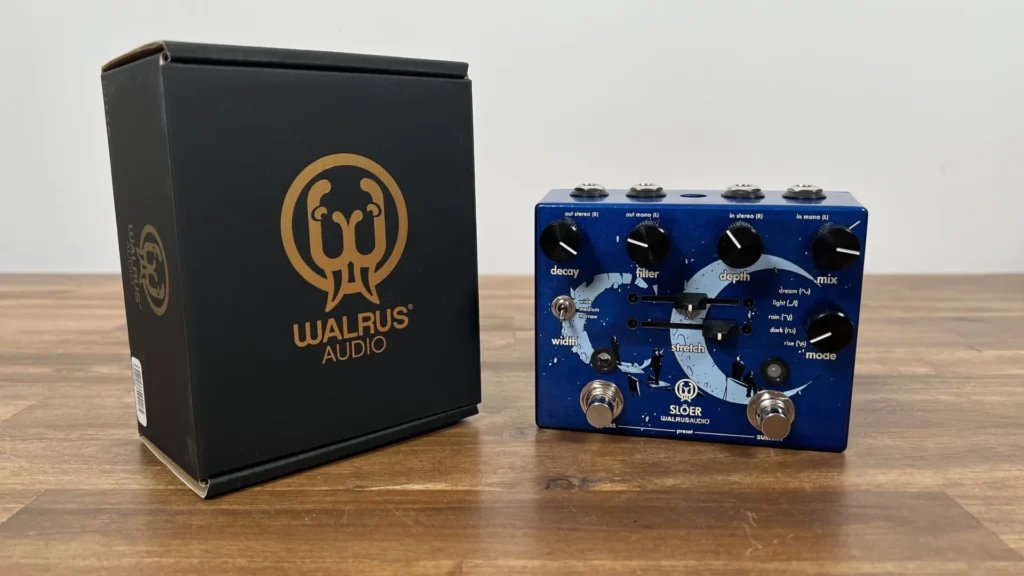
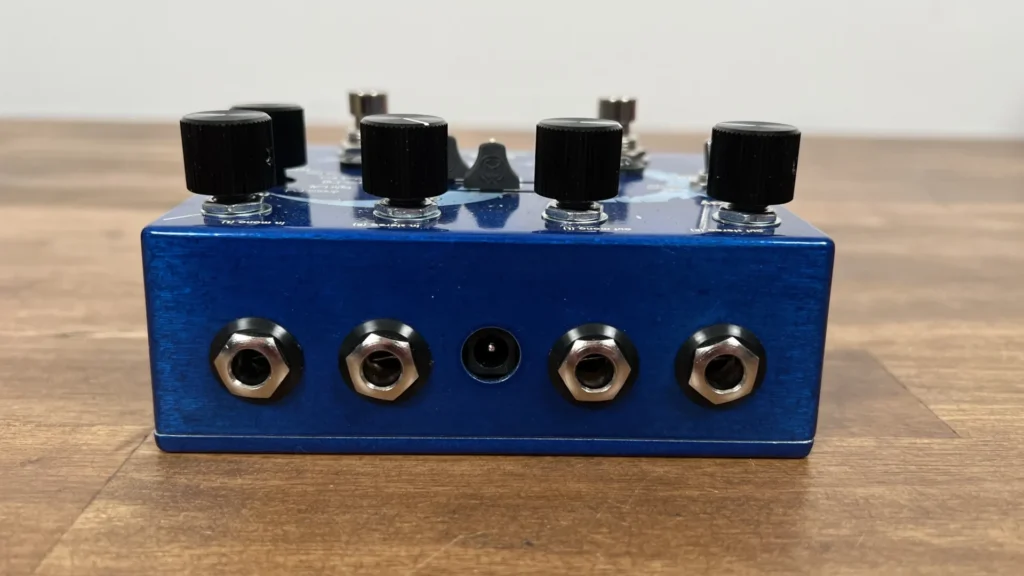


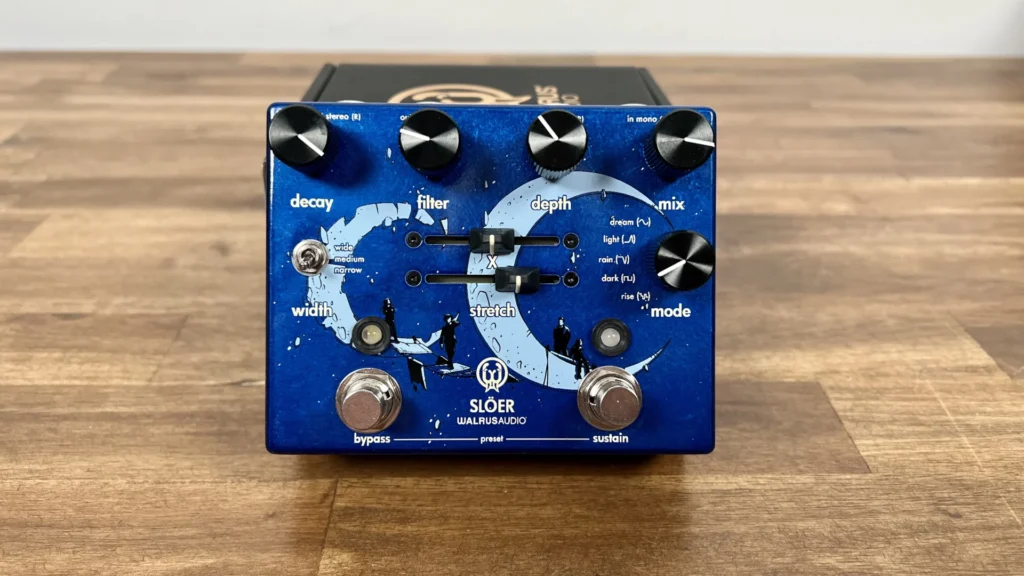
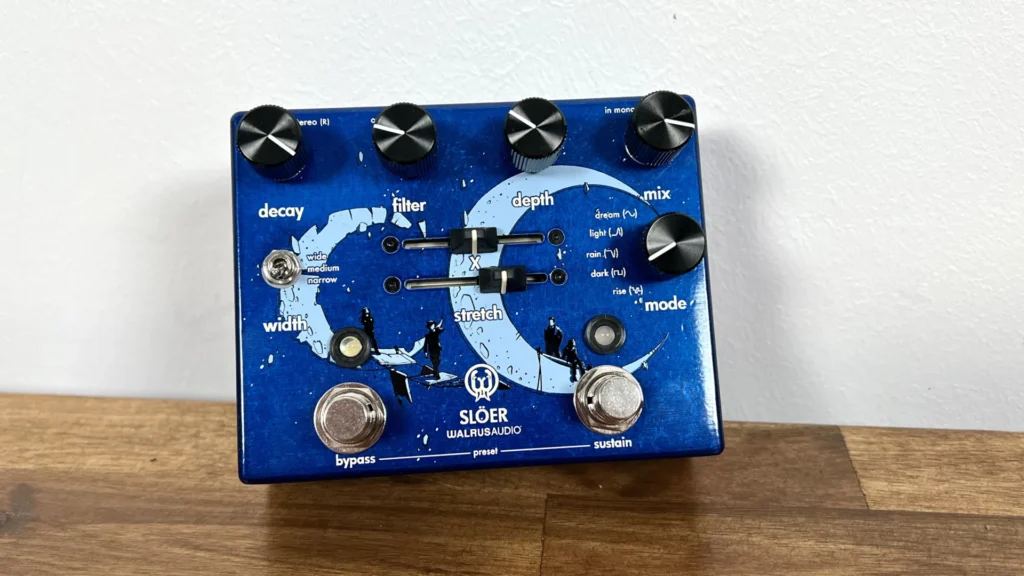
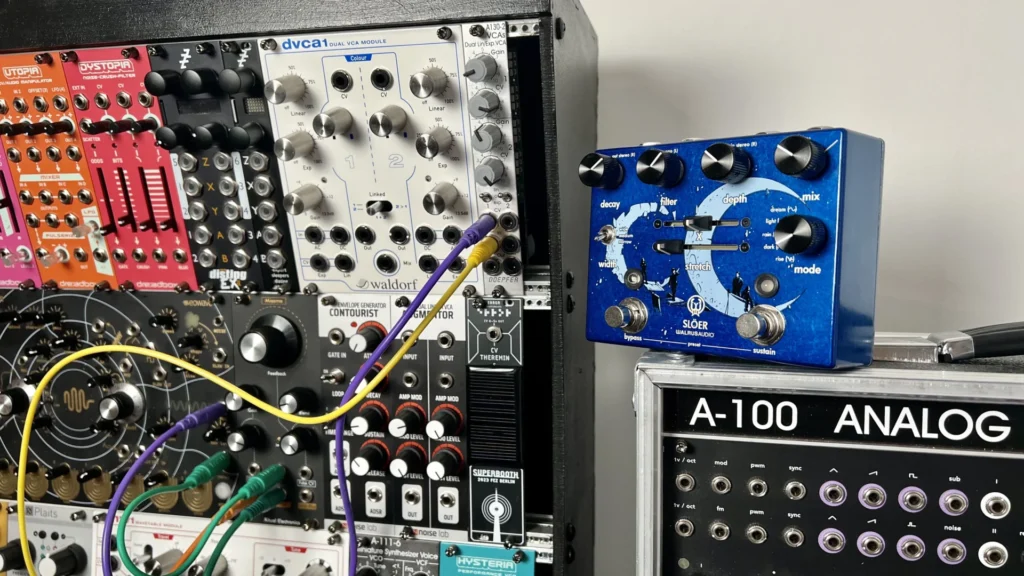
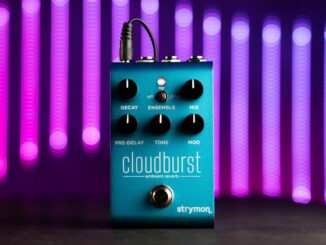
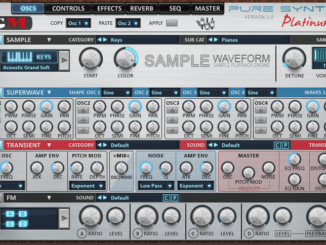
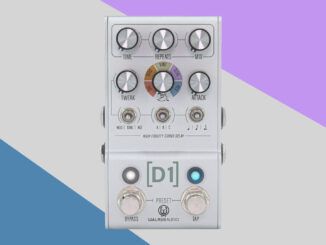
Be the first to comment